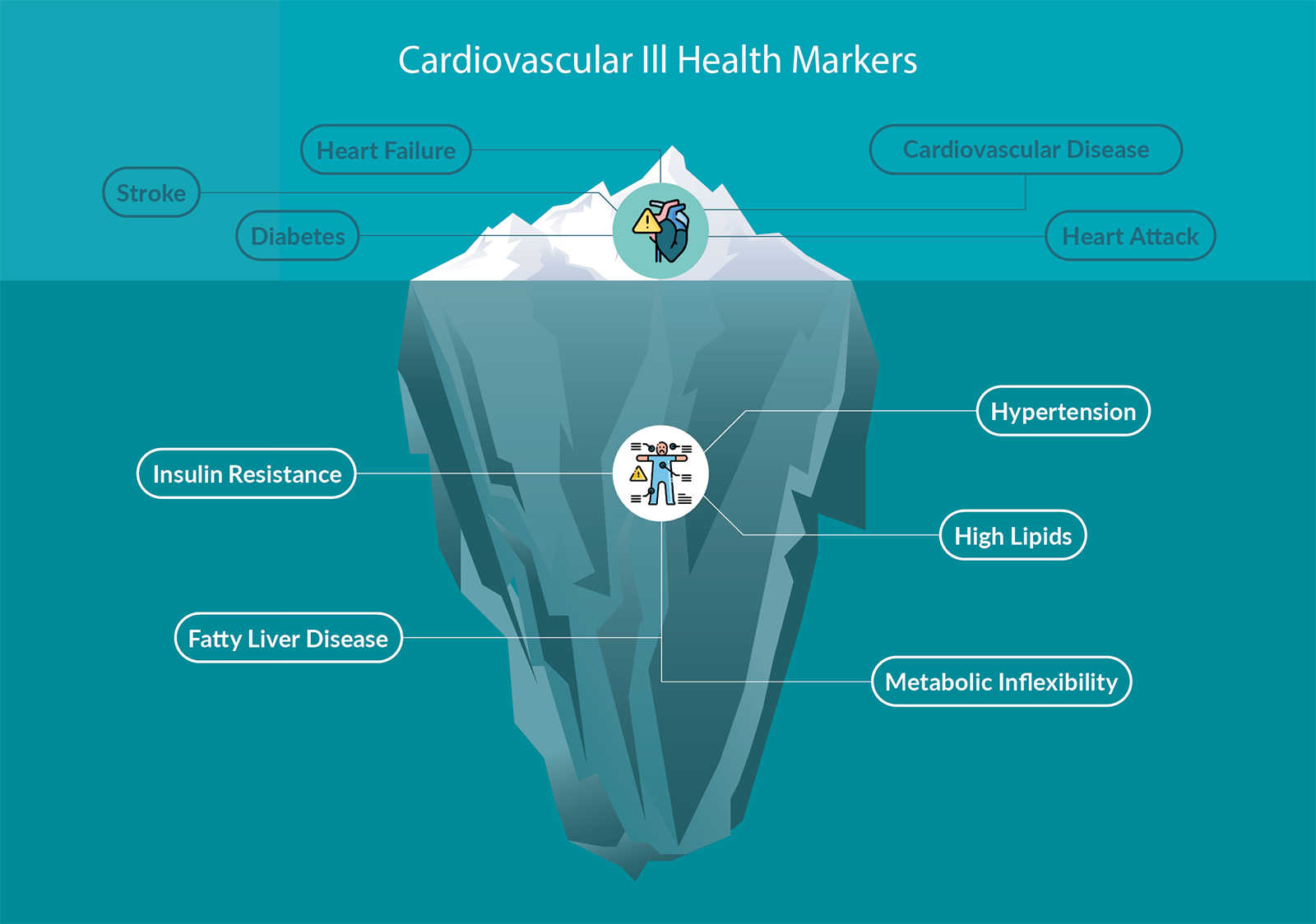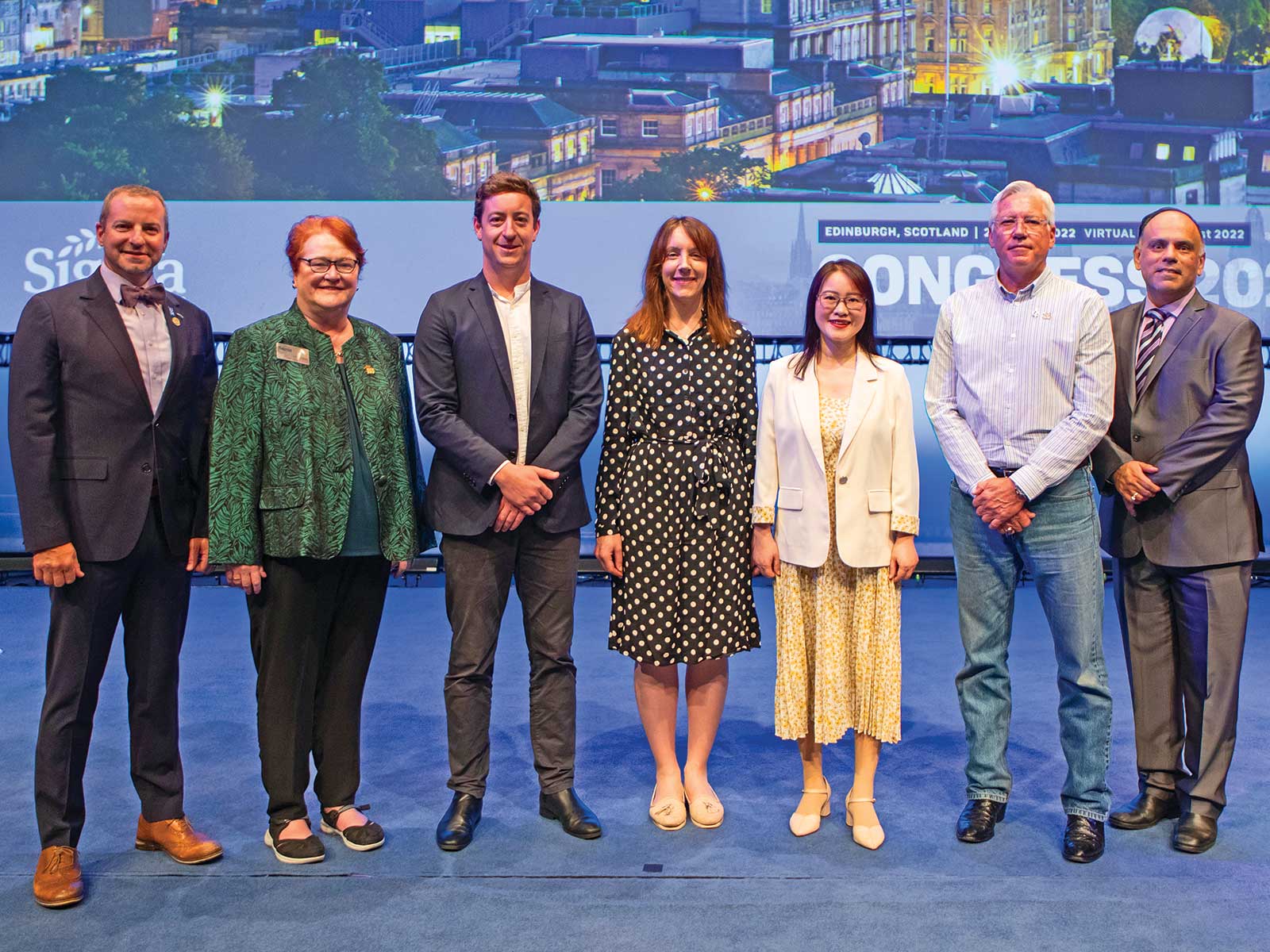
Issue 45
Jan 2023
AFFAIRS OF THE HEART
By Dr Mayank Dalakoti, Dr Matt Ackers-Johnson, Dr Rijan Gurung and Prof Roger Foo from the NUS Medicine Cardiovascular Disease Translational Research Programme (CVD TRP)

Three years of unanticipated turbulence. Lives adapted, jobs changed. In some countries, large numbers of lives lost and healthcare systems strained. Today, many economies and governments are still faltering and suffering. Few corners of the world are untouched, but we breathe a collective sigh of relief, and hope that normal is finally back with us.
Even so, what is normal? There are some things that have not changed. For the heartbreak of every life lost to COVID-19 in the last three years, at least seven more have been claimed by cardiovascular disease. This is a trend that remains stubbornly rising over past decades across the world, and particularly acutely here in Singapore.
Here, one in three deaths, around 21 each day, are due to cardiovascular disease (CVD). CVD can cut short an adult life in its prime, and also cause debilitating chronic ill health in the silver years of an increasingly ageing population. Between 2026-2029, Singapore will become a “super-aged society”, where one in five persons will be aged 65 or above1. By 2030, there will be only 2.1 working persons per every retired individual2. CVD is the worrying barrier to population health, accounting for ~30% of chronic conditions causing overall disability3.
Against this backdrop, our article summarises CVD research at the cutting edge, from genes, molecules, RNA, DNA to cohorts and clinical trials, and takes a leap into the future.

The mighty molecule RNA
Until two years ago, no one would have imagined that half the world would come to be injected with this mighty molecule, and that RNA would become centrestage for hot biotech pursuit. Beyond being used as vaccines, RNA is now also the new therapeutic biologic that is unlocking “undruggable” targets that were previously unreachable or intractable by conventional medicines such as small molecules. For example, loaded with intricate molecular engineering design, the RNAi molecule Patisiran4, targeting the gene TTR, is the game changer that offers new hope for patients with amyloidosis5, a relatively rare but severely debilitating disease that results from abnormal protein deposition in organs, including the heart.
With wider patient reach, Inclisiran uses the same RNAi approach, but with a different engineering design, targeting the gene PCSK9, and reducing LDL-cholesterol by ~50%6, offering for the first time a cholesterol-lowering medicine that needs only two subcutaneous injections a year, compared to the daily doses of small molecule statins. Major effort is ongoing to identify many more gene targets of disease.
Until two years ago, no one would have imagined that half the world would come to be injected with this mighty molecule, and that RNA would become centrestage for hot biotech pursuit. Beyond being used as vaccines, RNA is now also the new therapeutic biologic that is unlocking “undruggable” targets that were previously unreachable or intractable by conventional medicines such as small molecules.
Melting plaque, helping the heart to heal
A means to identify gene targets is by studying cellular gene expression signatures called transcriptomes. Meaningful gene targets are the ones that orchestrate major behavioural changes in the cell, underpinning why and how an organ fails and progresses into the diseased state. Today, transcriptomes can be analysed by single cell technology (scRNA-seq), and combined with advanced mass spectrometry (CyTOF and CITE-seq), and/or imaging techniques such as laser-capture microdissection (LCM) to offer cell-specific and spatial resolution (spatial transcriptomics). Cell type specific gene targets are being uncovered with ever more sophistication.
deaths (~ 21 each day) are due to cardiovascular disease
In the atherosclerotic plaque, we hope that studies will yield discoveries of (a) which cells in the plaque to target, and (b) which gene(s) to target, in order to achieve the holy grail of plaque regression. In the heart muscle (myocardium), heart failure results from the loss of contracting cells, occurring with increasing age and aggravated by a heart attack. For the latter, the aim is to find gene targets that offer regenerative therapy and myocardial self-healing. Getting to the root cause and achieving disease regression or reversal have only become possible today because of the discovery of key disease-causing genes.
DNA CRISPR – “Once and for all” therapy
While repeat doses are still needed for RNAi medicines because of the cellular turnover of their RNA targets, the Nobel prize-winning technology of DNA gene editing (CRISPR) directs treatment to the blueprint DNA itself, making it a “once and for all” therapy (only one dose needed lifelong). Here again, the targeted gene edit of PCSK9 produces ~50% lowering of LDL-cholesterol7, and the groundbreaking CRISPR clinical trial has started recruiting in New Zealand8, with more patients being assessed for suitability in London.
The safety for both RNA and DNA approaches will be watched closely in the coming months and years. Indubitably, the massive impact and potential of these new medicines/technologies/therapies mean that as long as key disease-causing genes are identified, new treatment frontiers for CVD and many other diseases will be breached in the coming years.
The safety for both RNA and DNA approaches will be watched closely in the coming months and years. Indubitably, the massive impact and potential of these new medicines/technologies/ therapies mean that as long as key disease-causing genes are identified, new treatment frontiers for CVD and many other diseases will be breached in the coming years.
Going below the iceberg: prevention is better than cure
We often believe ourselves to be “healthy” whilst not diagnosed with disease, but the reality is a wide continuum. Young and seemingly fit and exercise-conscious adults may appear apparently healthy, yet harbour measurable cardiovascular abnormalities, progressing unknowingly and precariously towards the tip of the iceberg.

But cardiovascular ill health is more easily reversible if detected early. Who among us has “hidden” or early CVD? Who is moving more quickly to the tip of the iceberg? Do we yet have all the best tests to assess this? What are more easily accessible markers that will help us to tell who is more prone, and who we should pay more attention to and manage more urgently? Emerging evidence suggests that lifestyle modifications such as vigorous intermittent lifestyle physical activities (VILPA)9 are helpful for CVD prevention. How does this apply in the Singaporean and Asian context? Our disease causal factors may differ here, so the same lifestyle changes may not work if simply transcribed over.
Sleep, circadian rhythm, psychological stress, diet choices, also have implications on CVD health. Overall, what variables of lifestyle and social determinants should we tackle for Singapore, and how do we go about it? Beyond relying on episodic, subjective assessment of patients at each of their clinic visits, a digital medicine approach is to use sensitive and continuous measurements from the patient’s wearables (e.g. FitBit or Garmin). Dynamic lifestyle variables may indeed hold the key to new biomarkers for early CVD detection. Answering the national call for Healthier SG10, the NUS Yong Loo Lin School of Medicine’s Cardiovascular Translational Research Programme is therefore channelling our major research effort into CVD early detection and prevention.

In November 2022, we collaborated with the IRONMAN group (organisers of the Standard Chartered Singapore Marathon) to kick off a long-term first-of-its-kind partnership in Singapore to raise awareness and carry out research analysis of “hidden” CVD among outwardly healthy and health-conscious runners. We are doing this concurrently with our “PICMAN” and “REGULOMICS” cohort studies, recruiting and carrying out analyses on the same theme. See QR codes for details on these two studies.
Particularly poignant was when a young colleague from a partner institution experienced unexpected sudden chest pain one day in December last year. He was admitted through the A&E with what turned out to be a heart attack. He is making good recovery, but his is a story that is not unfamiliar to us in Singapore, emphasising the pressing and urgent need for CVD research in this area.
The future is precision cardiology
Molecules and gene discovery are at one frontier, exposing new medicines that were hard to imagine possible even five or 10 years ago. No longer content with just slowing down disease progression, medicines of the future should all be targeting disease regression or disease reversal. Applying the same powerful companion molecular diagnostic tools means that we may soon also achieve the ultimate goal of precision cardiology, where each person is assessed based on his/her detailed molecular, clinical and lifestyle parameters, following which preventive or treatment advice or medicines can be tailored and prescribed accordingly and precisely.
The wealth, diversity and mountain of data collected (including molecular, clinical and lifestyle parameters) are accumulating exponentially. Data science, data safety, data management, data interoperability, and the integrative analysis to make sense of what is relevant and how much relevance each data point has: are all key frontiers that CVD research will have to tackle and master in the coming years.
If we get these right, our CVD research will truly bring us closer to a future where heart disease is a thing of the past.
Click here to read more about the “PICMAN” study.
Click here to read more about the “REGULOMICS” study.
https://population.un.org/wpp/.
https://www.statista.com/topics/5821/ageing-population-of-singapore/.
http://www.healthdata.org/.
https://www.nejm.org/doi/full/10.1056/NEJMoa1716153.
https://www.webmd.com/cancer/lymphoma/amyloidosis-symptoms-causes-treatments.
https://www.nejm.org/doi/full/10.1056/NEJMoa1912387.
https://www.nature.com/articles/s41586-021-03534-y.
https://www.nature.com/articles/s41587-022-01445-5.
https://www.nature.com/articles/s41591-022-02100-x.
https://www.straitstimes.com/singapore/health/healthier-sg-six-things-you-need-to-know-about-singapores-healthcare-reform-plan.
More from this issue



